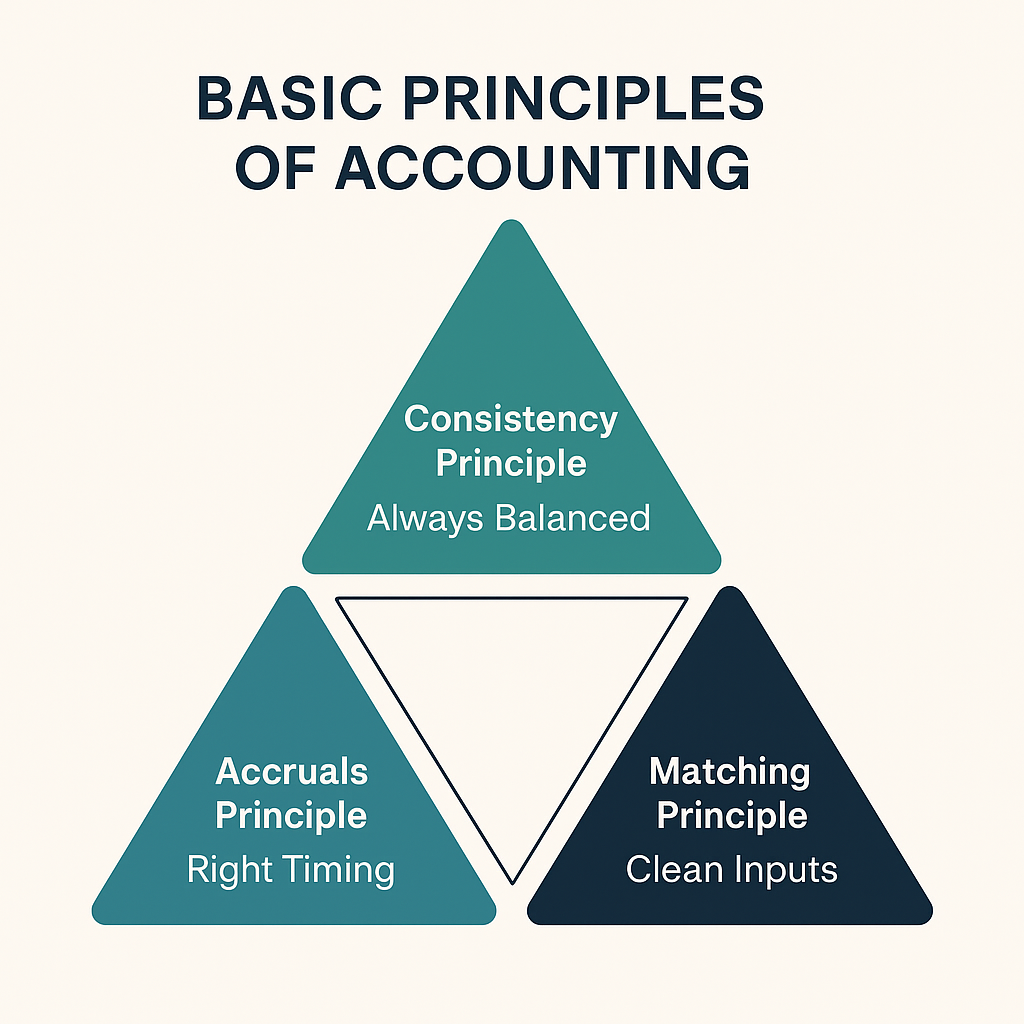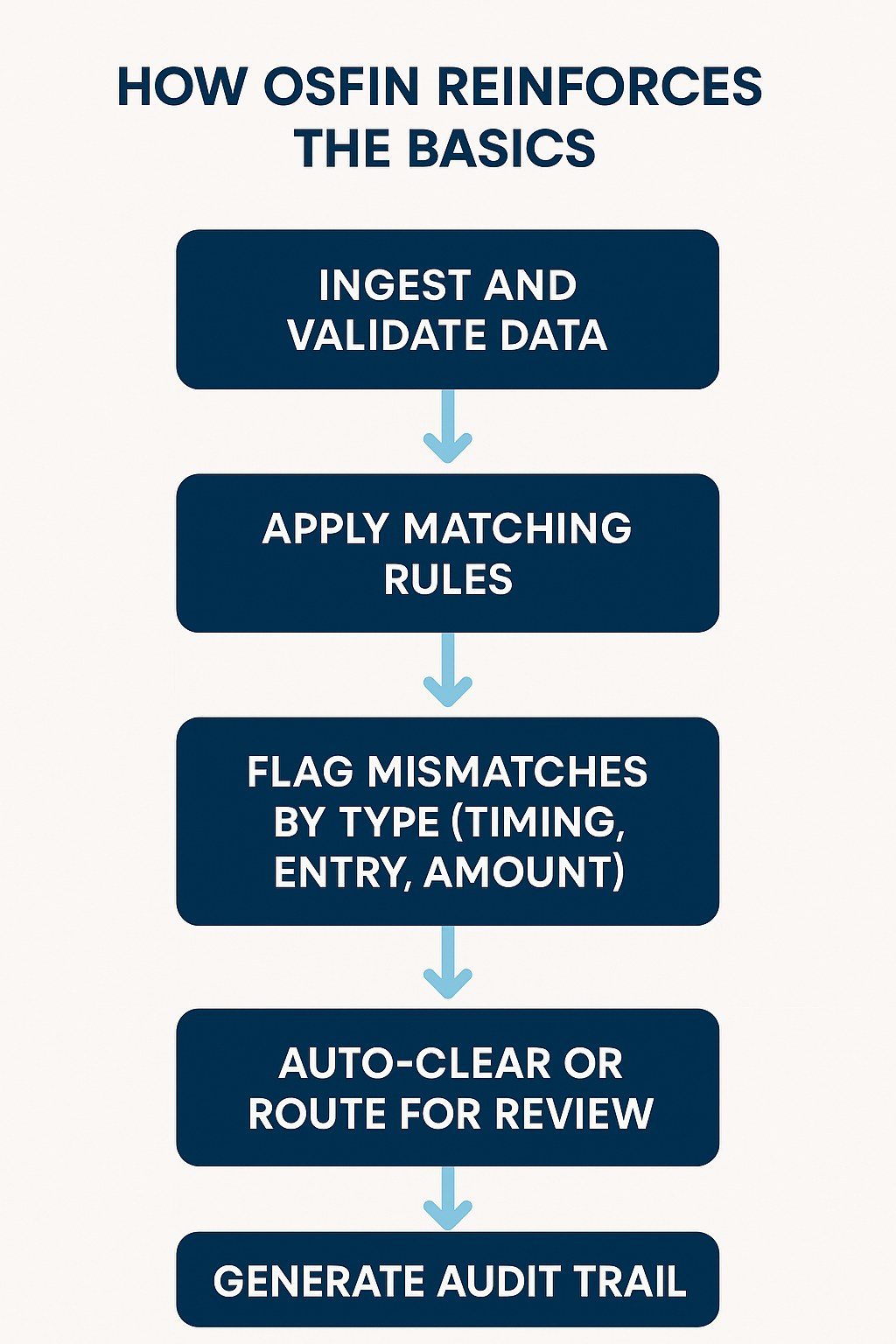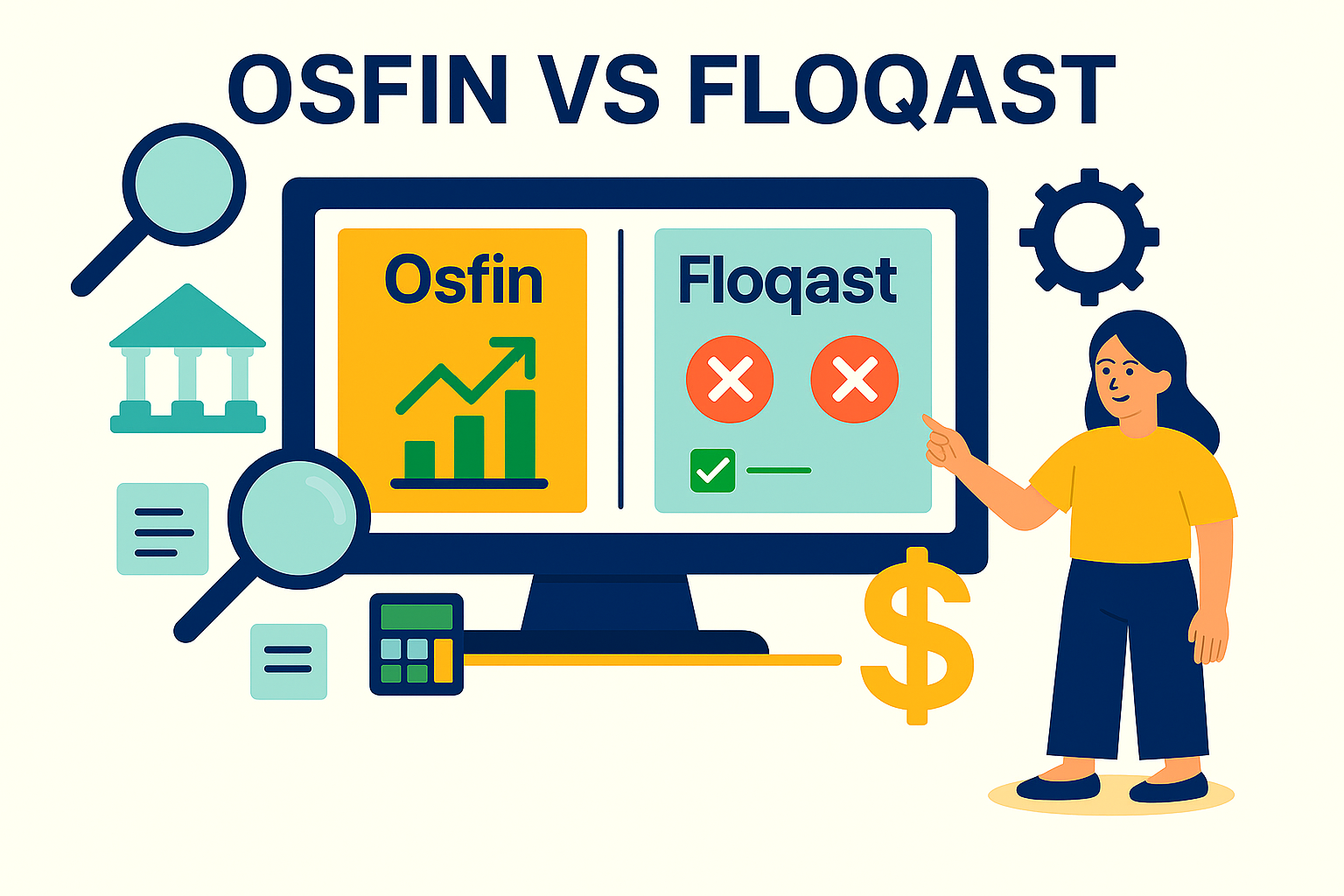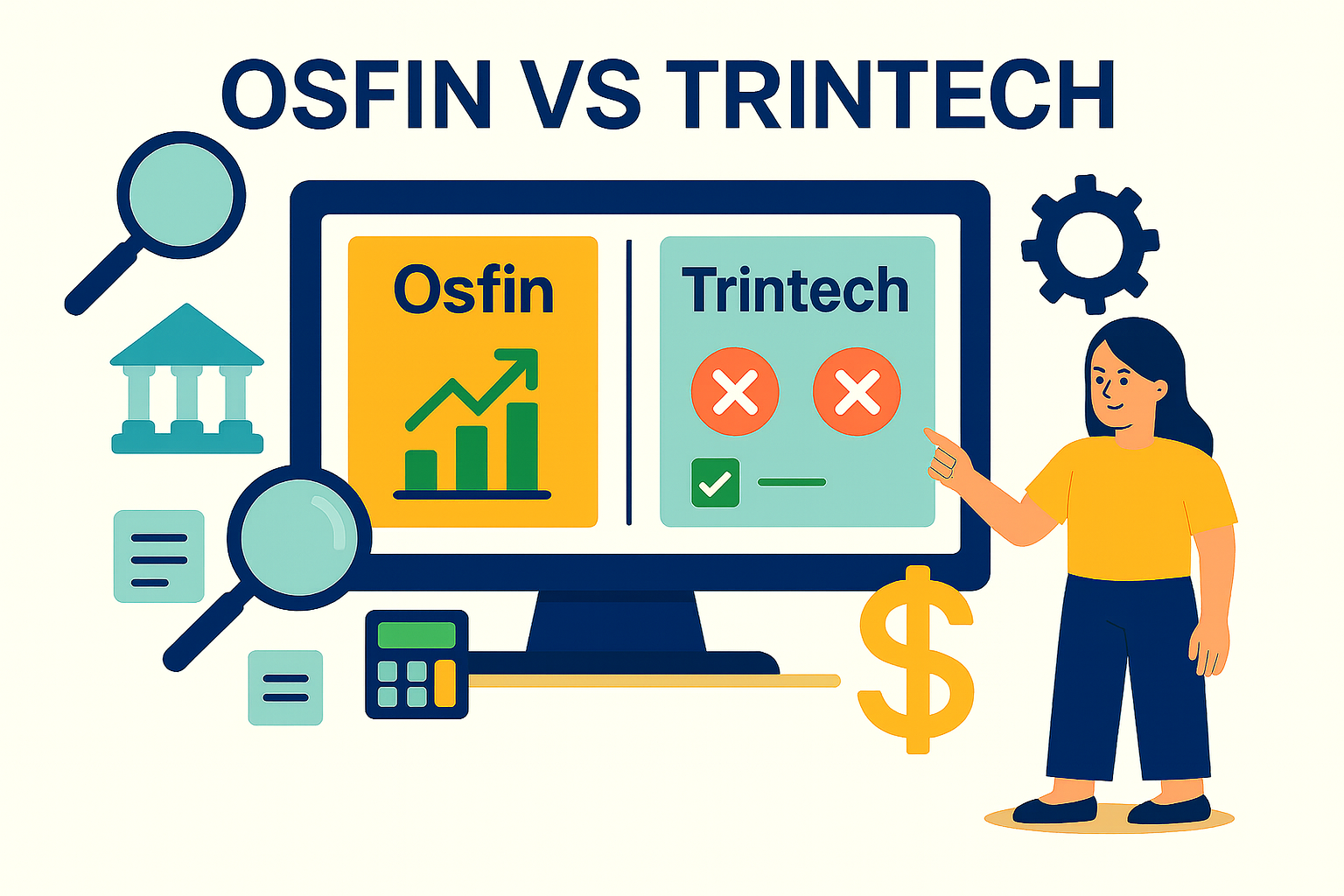3 Accounting Basics Every Reconciliation System Should Follow
The core of reliable reconciliation is a solid foundation in accounting. There are three basics of accounting: consistency, accruals, and matching. When you're automating reconciliation, possibly across millions of transactions, these basics create a credible base for a reconciliation system. They ensure the accuracy, reliability, and consistency of every debit and credit transaction for your financial institution.
In this article, we will explore what the basic 3 rules of accounting are, how they are applied in reconciliation, and why they are so important to financial operations.
What Are The 3 Basic Accounting Principles?
The 3 basic accounting principles ensure every transaction is recorded, matched, and validated. In turn, this ensures that your institution’s financial operations are regulatory-compliant and audit-ready.
In accounting, these principles deal with credit and debit transactions across different types of accounts – real, personal, and nominal. Let's briefly look at each, in the context of reconciliation.
1. Consistency Principle
The consistency principle emphasizes the need to use the same accounting methods across systems and over time.
During reconciliation, data often comes from different sources such as banks, ERPs systems, and payment processors. Each source may follow its own format and conventions. It’s important that this data is interpreted using the same logic, hence consistency becomes crucial.
The golden rules of accounting, like “debit the receiver and credit the giver”, or “debit what comes in and credit what goes out”, only hold up when applied consistently. Without this foundation, the same transaction could appear differently across different systems, messing up reconciliation.
2. Accruals principle
Next, another basic accounting principle is to record transactions when they’re incurred. This is how you get a clear picture of your institution’s financial position. Accrual also lets you catch discrepancies caused by timing differences, which is a common reason why balances don’t match during reconciliation.
Accrual accounting allows systems to stay on top of new transactions. Over time, this enables your institution to maintain accurate financial reporting across periods.
3. Matching Principle
Lastly, the matching principle states that expenses should be recognized in the same period as the revenues they help generate. In reconciliation, this translates to intelligent matching of transactions and thorough data validation. This helps to report net interest margins, fee income, or other earnings within the correct time periods.
Clean data is a prerequisite, and a necessity. Every reconciliation process should begin with format normalization, source validation, duplicate detection, and outlier checks. Without proper matching and data quality controls, even well-recorded transactions can fail to reconcile, ultimately leading to delays, errors, and audit risk.
Now that we’ve outlined the 3 basic accounting principles, let’s see how these are actually applied within a reconciliation process.
{{banner1}}

How Do You Apply The Accounting Principles To Your Books?
Accounting principles are only as effective as the systems that apply them. The 3 basic accounting concepts must be built into the logic of reconciliation systems. Here’s how the accounting principles look within the practice of reconciliation:
- Consistency is maintained by applying the same matching rules across systems, so every transaction is processed with identical logic. This makes sure that your reconciliation process is coherent.
- Accruals ensure that all expenses and balances are recorded in the correct time period, ensuring proper maintenance of business records.
- Matching relies on strong validation methods to verify that data from both internal and external sources is clean and standardized.
For financial institutions reconciling high volumes of transactional data, this process has to be systematic. It cannot depend on manual review alone. When applied consistently, these basic 3 rules of accounting makes reconciliation faster, more accurate, and audit-compliant. In the next section, we’ll look at why these principles are essential for banks and financial institutions.
{{banner2}}
Why These Principles Matter for Financial Institutions
For a financial institution, failing to apply accounting fundamentals to reconciliation can result in serious operational and regulatory consequences.
Here’s what’s at stake when reconciliation processes do not incorporate the basic 3 rules of accounting:
- Reconciliation delays:
Without validation and structured matching logic, reconciling transactions can stretch into days worth of manual cleanup. This is an added workload for your finance and operations teams.
- Inaccurate cash positions:
Without accrual and proper matching, your institution’s cash may appear better or worse than its actual position. A better overview of your cash position aids in better lending, risk and reserve calculations.
- Manual workload overload:
Another consequence of not following the 3 accounting principles is the manual workload on your finance and operations teams. Following them in your reconciliation can significantly reduce this unexpected workload.
- Audit exposure:
Faulty accounting practices can make reconciliations difficult to trace. Following through with the principles contributes to your audit readiness, by ensuring that you have reliable financial records to compare across time.
- Revenue leakage:
Without strong accounting principles in place, you may come across unmatched cash, duplicate entries, or other errors. These can result in either missed payments or overstatements, hampering understanding of your institution’s actual income from fees, interest, or services.
Remember that as your financial data volume goes up, small deviations get amplified. A minor timing mismatch can end up becoming a major reporting error. Clearly, the cost of poor reconciliation extends beyond accounting errors. To avoid these risks, your reconciliation system needs intelligent automation that incorporates the basic 3 rules of accounting.
In the age of AI and automation, automated systems can process millions of records in a matter of minutes. Modern reconciliation tools must combine intelligent automation with the discipline of accounting rules. Osfin.ai does exactly that by embedding consistency, accrual principles, and data validation into every step of the reconciliation process. Let’s find out how Osfin achieves that.

discipline of accounting rules.
Accounting-Driven Reconciliation with Osfin.ai
The 3 basic accounting rules are critical to efficient financial processes. Your reconciliation systems need to follow the 3 basic accounting concepts:
- Processes must apply consistent logic and exceptions across all data sources involved in a given process of reconciliation
- Transactions need to be recorded based on when they occur, not when they’re paid
- Matches should be made using clean, validated, and properly aligned data
When you apply these fundamentals correctly, reconciliation becomes advantageous for your business. With Osfin, the 3 basic accounting principles are embedded directly into your institutional reconciliation workflows. From real-time data validation to accrual-aware logic and rule-based consistency, Osfin delivers reconciliation that you can rely on.
Osfin.ai was designed with the 3 basic accounting principles at its core. Its intelligent reconciliation engine integrates consistency, accrual logic, and data matching into every workflow, while using automation, AI, and real-time data ingestion to enable reconciliation across all scales of data.
Here’s how it supports the basic 3 rules of accounting:
1. Consistency in Matching Logic
Osfin uses rule-based workflows to ensure that matching logics are applied uniformly across different financial data sources: general ledgers, subledgers, bank feeds, ERPs, and payment gateways. Osfin’s system enforces consistent credit-debit logic across all sources, keeping all files involved in a single process reconciliation aligned and traceable.
2. Accrual-Based Design
Osfin is built to manage complex scenarios. This allows the system to distinguish real mismatches from those caused by timing, improving accuracy and exception handling.
3. Integrated Data Validation
Accurate matching starts with clean data. Osfin checks every incoming record for required fields, data format consistency, formatting issues, duplicates, and unexpected values, before reconciliation even begins. This ensures errors are caught early.

By reinforcing these 3 basic accounting principles automatically, Osfin helps finance teams close books faster, prevent revenue leakage, and improve reporting accuracy. But Osfin doesn’t stop there. It is capable of reconciling millions of entries across sources in minutes. It integrates seamlessly with banks, ERPs, and payment service providers accepting multiple file formats and supporting multi-way matching across complex transaction chains.
Here’s what else Osfin offers:
- Osfin supports 170+ pre-built connectors, allowing instant ingestion of data from CBS, ERPs, processors, APIs, and bank feeds without engineering effort.
- It includes a no-code rule builder that lets finance and ops teams define match rules, tolerances, and exception routing paths without writing code.
- It provides real-time dashboards showing unresolved entries, exceptions by type, daily reconciliation status, and risk exposure, giving teams full operational visibility.
- Osfin applies automated exception tagging, classifying mismatches as duplicates, timing-related, amount mismatches, or missing data, with contextual routing to the right teams.
- Osfin offers full audit-readiness with timestamped logs, automated approval workflows, and traceable transaction history for internal and regulatory reviews.
- All data is protected with 256-bit SSL encryption, and Osfin supports role-based access control and optional two-factor authentication for added security.
- The platform is SOC 2, ISO 27001, PCI DSS, and GDPR-ready, making it compliant with regulatory expectations for banks and financial service providers.
- Osfin can match 30 million records in 15 minutes with 100% accuracy, enabling financial institutions to reconcile high-volume transaction data quickly and reliably.
With these capabilities, Osfin sets itself apart as a reliable reconciliation system for every financial enterprise.
{{banner3}}
FAQs on Basics of Accounting
1. How often should financial institutions perform reconciliations?
It depends on transaction volume, risk exposure, and regulations (e.g., SOX, IFRS, RBI/SEC). Smaller institutions may reconcile monthly, but most banks reconcile weekly or daily to catch issues early and ensure compliance.
2. What kind of data sources should a reconciliation system support?
A reconciliation system should support a wide range of data sources to be effective. This includes ERP platforms, core banking systems, payment processors, and more. Supporting multiple data streams is a key factor to look for in a good reconciliation system. Osfin handles all of these and more.
3. How do you apply the golden rules to your books?
For real accounts, the rule is to debit what comes in and credit what goes out. For personal accounts, you debit the receiver and credit the giver. Finally, for nominal accounts, you debit expenses and losses, and credit income and gains. These are the applications of the basic 3 rules of accounting that contribute to reconciliation.
4. What are some warning signs of poor reconciliation practices?
Signs of poor reconciliation practices can include an increasing number of unreconciled transactions, last-minute adjustments during the ending of the reconciliation process, or recurring audit issues. These often happen as a result of ineffective reconciliation practices.
5. How do reconciliation systems adapt to evolving regulatory demands?
Reconciliation systems adapt to changing regulatory requirements by offering flexible rule configurations as well as integrations with standards like AML, KYC, and SOX. Platforms like Osfin are also continuously updating their workflows to reflect newer regulatory demands.


